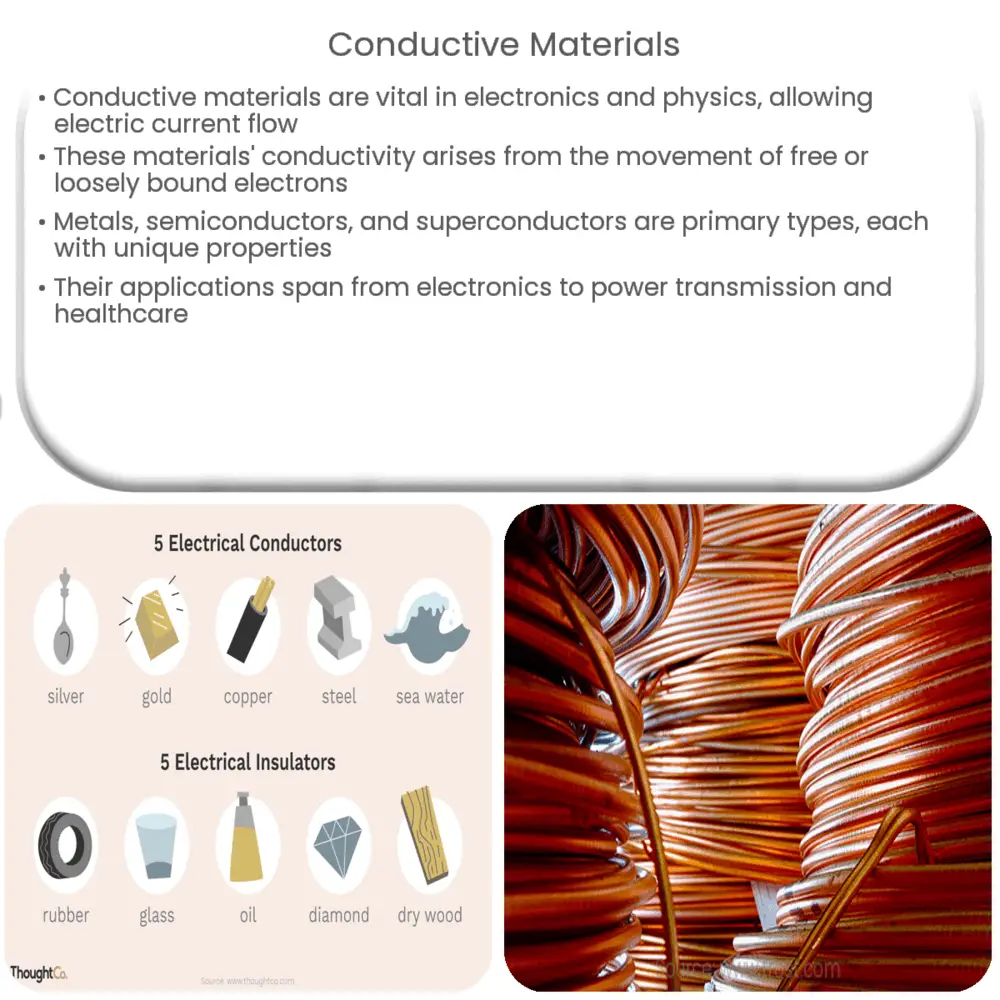Explore the fascinating world of conductive materials, their types, properties, applications, and future prospects in this comprehensive article.

Understanding Conductive Materials
Conductive materials are essential elements in the world of electronics and physics. They form the foundation for numerous applications that permeate our everyday life. In simple terms, conductive materials are those that permit the flow of electric current through them. Their underlying physics is fascinating and diverse, driven primarily by the nature and configuration of their atomic structures.
The Basis of Conductivity
Conductivity in materials is a consequence of the behavior of free or loosely bound electrons. When these electrons are subjected to an electric field, they gain energy and begin to move, creating what we know as an electric current. Conductive materials have a considerable number of such electrons, which allows for the smooth passage of electricity.
Types of Conductive Materials
- Metals: Metals like copper, silver, and gold are among the most effective conductive materials, due to the abundance of free electrons present. Copper, for example, is the most commonly used conductive material in electrical wiring because of its high conductivity and cost-effectiveness.
- Semiconductors: Materials like silicon, germanium and certain types of organic compounds fall into this category. While they do not possess the same level of conductivity as metals, their conductivity can be modified using a process called doping, making them useful in a wide variety of applications.
- Superconductors: These materials exhibit zero electrical resistance when cooled below a certain temperature, known as the critical temperature. This unique property opens up interesting possibilities for power transmission and magnetic field applications.
Conductive Material Characteristics
It’s important to understand that conductivity isn’t a binary property—different materials can conduct electricity to varying degrees. Factors such as temperature1, pressure, and the presence of impurities can all affect a material’s conductivity. For example, while metals generally increase in resistance (and decrease in conductivity) as temperature rises, semiconductors behave in the opposite manner, increasing their conductivity as temperature increases. This difference is fundamental to the operation of many electronic devices.
Let’s explore further in the following section to gain a deeper understanding of these intriguing materials.
Applications of Conductive Materials
Given their crucial role in enabling the flow of electricity, conductive materials find applications in various sectors:
- Electronics: Nearly every electronic device relies on conductive materials for operation, from your smartphone and computer to more complex systems like satellites and medical equipment. Metals are commonly used in wiring and circuit board tracks, while semiconductors form the core of transistors and integrated circuits.
- Power Transmission: The electrical grid depends on conductive materials to transmit power from power stations to homes and businesses. High-voltage transmission lines are typically made of aluminum or copper.
- Healthcare: Conductive materials are used in numerous healthcare applications. For example, they’re crucial in EEG and ECG devices that measure electrical activity in the brain and heart.
Future of Conductive Materials
Emerging technologies and scientific advancements promise an exciting future for conductive materials. For instance, the discovery and further research into superconductors, materials that can conduct electricity with zero resistance at extremely low temperatures, holds immense potential. Additionally, the nanotechnology realm is constantly pushing the boundaries, creating novel materials with tailored conductive properties.
Conclusion
In conclusion, conductive materials play an integral role in modern technology and infrastructure. Whether it’s the copper wiring in your home or the semiconductor chips in your smartphone, these materials make our modern world possible. Understanding the properties and behavior of conductive materials is crucial in fields such as electronics, energy, and healthcare, and will continue to be a major focus of scientific research and development in the years to come. As we continue to discover and develop new conductive materials, and as we find new ways to manipulate their properties, we can expect a future of technological advancements and scientific breakthroughs that will further transform the world around us.

